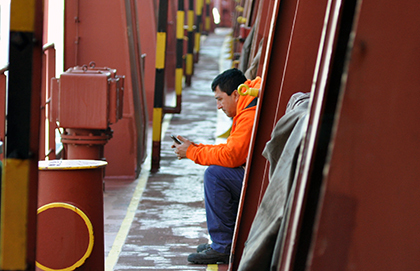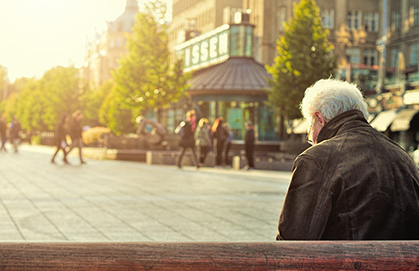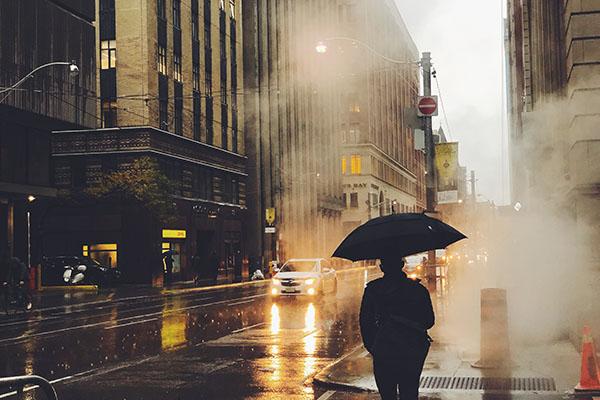This article first appeared here.
That we all crave social contact has become painfully clear in the past weeks – we do not do well in self-isolation, especially in quarantine. If there is any upside to the current crisis, it might be that we are learning that we need each other and we can’t take each other for granted. But how do we respond to that need? Enormous sums are being spent to tackle the healthcare and economic fallout of the crisis, but what about the social challenges that will inevitably result, especially the harmful impacts of prolonged social isolation? We might learn how to reach out to each other at this time from the example of seafarers’ centres, which take care of seafarers in social isolation regularly.
Seafarers’ centres exist to help solve the small but important challenges facing seafarers in a foreign port: how to get Wi-Fi, a tube of toothpaste, or a ride to the local market to buy some chocolate, for instance. These sound like trivial problems, but, unlike airports, seaports are not designed to make it easy and convenient for those visiting to find what they need. Without help, seafarers often end up spending too much of their hard-earned money and shore leave organizing a ride to the shops, finding the things that they need, and getting back to the ship on time. Seafarers’ centres, often religious non-profits surviving off of donations and volunteer labour, offer transportation and Wi-Fi in a low-cost, convenient, and stress-free manner.
Providing convenience and low prices are not the main reasons these charities exist, however. Social isolation is inherent in the life of a seafarer: they are apart from family and friends for months at a time and have limited opportunities for communication with them. Irregular hours, a tight schedule, and language barriers can make even the ship itself an isolating work environment. The primary mission of a seafarers’ centre, and the one that has been most consistent over the history of seafarers’ centres, is not services, but being a friendly welcome in a faraway place. It is the people of the seafarers’ center – its staff, chaplains, and volunteers – that are at the core of accomplishing this mission. They exist to break down what social isolation has built up in the lives of seafarers.
A friendly welcome is not complicated: “Hello. Welcome! How are you doing?” Yet, to be done right, this welcome is something that takes resources and planning. Breaking down social isolation is not done passively, by sitting on our hands waiting for seafarers to ask us to reach out to them, but takes effort: we need to organize drop-in centres, transport buses, and a team of ship visitors to make sure it happens. Many also stay in contact with seafarers who have left their ports, whether by Facebook, WhatsApp, or even snail mail.
In the same way, in the present crisis, social isolation will not be confronted by sitting on our hands and thinking a few good thoughts. The need for action rests not only with governments or business, but with kind-hearted, ordinary citizens: you.
Sharing on social media about the plight of others or about social isolation is not enough – that is a passive response, not an active one. Social media is too often a world of good intentions and impersonality, not action and relationships. It is all well and good to share news, but that is not something that will really counteract social isolation. That comes from real contact and a genuine, caring human voice.
In the public health sphere, we all know that action is more important than information. The virus cares nothing for good intentions we broadcast if we don’t actually follow what health authorities are saying; we need to actively wash our hands and stay away from crowds to flatten the curve. The same with good intentions and the effects of social isolation: don’t wait for people to call you, pick up the phone and call. Learn from the example of seafarers’ centres in working through the complications: if someone doesn’t have access to technology, maybe write them a letter; if you know someone who is especially isolated and difficult to reach, think about what needs to happen for them to be reached and what other needs they might have. Your voice and gesture of concern is the answer to the crippling loneliness and fear others (and quite possibly we ourselves) are feeling at this time.
If you haven’t already done so, pick up the phone today and call someone who might want to talk. Ask if there is anything that you can do. Make it a daily goal for the duration of the crisis to call one person for no other reason than to say, “How are you doing?”
And remember that in our current crisis the social isolation of seafarers has only been compounded – they are often not allowed ashore, they are away from family members at risk, and many at the end of their contracts are being blocked from returning home by travel bans. Others are unable to get to the ships with which they were starting contracts and are in financial hardship back home.
Seafarers are the human heart of maritime commerce and the reason we have goods on our store shelves. We can’t expect our pantries to be full and not care about the people that brought that food here. Social media is rightly full of thanks to medical professionals at this time who are putting themselves in the path of danger to treat those with the virus, but transport workers are equally essential – remember to be thankful to them too.
No doubt, the economic costs of the present crisis are staggering. Business and government leaders around the globe are deep in discussion to mitigate losses. But the social costs will be real as well. As a society, we do not do well cooped up in our homes by ourselves. We are meant to have contact with each other – it is not good for humans to be alone (Gen 2:18). Some of us are privileged to be with our spouses and children, yet a huge number have no one else to pass the days or are essential workers who have little or no contact with their families.
Make that extra effort today to call someone who might be alone. It is a small gesture with big meaning.
Photo used with permission: SCI NY&NJ






